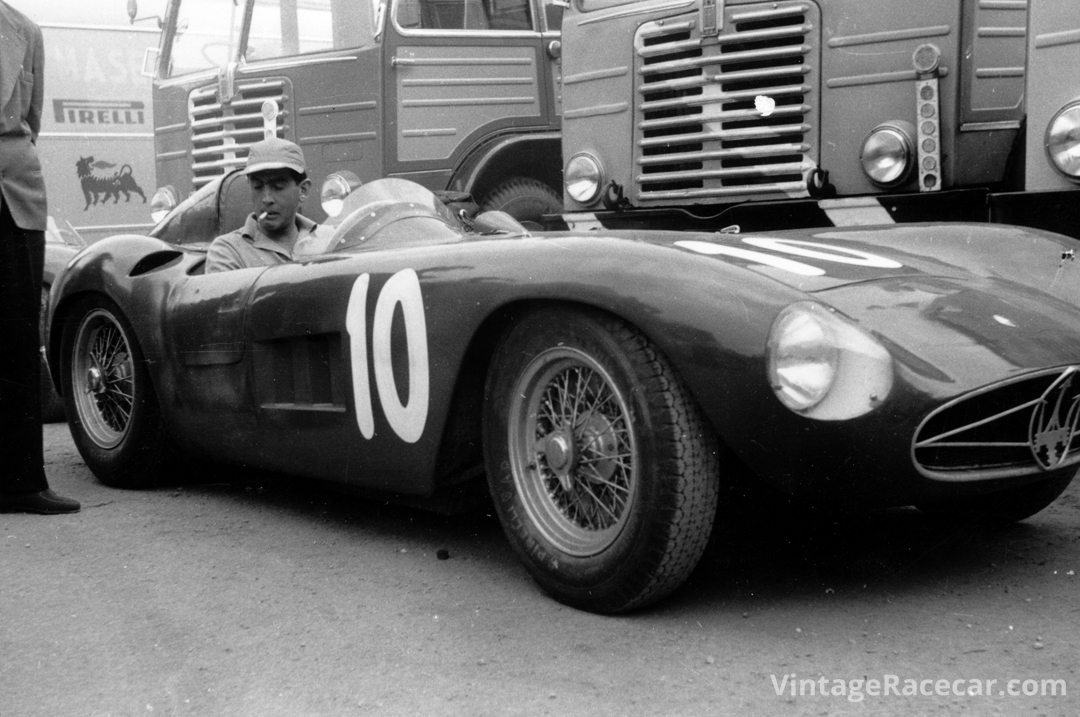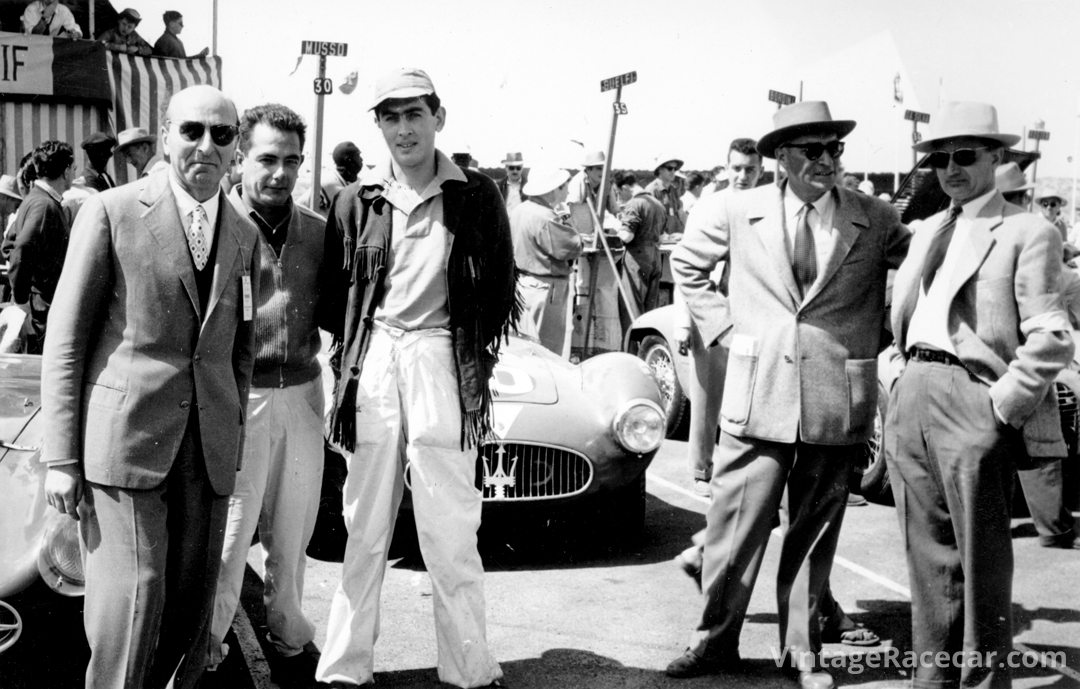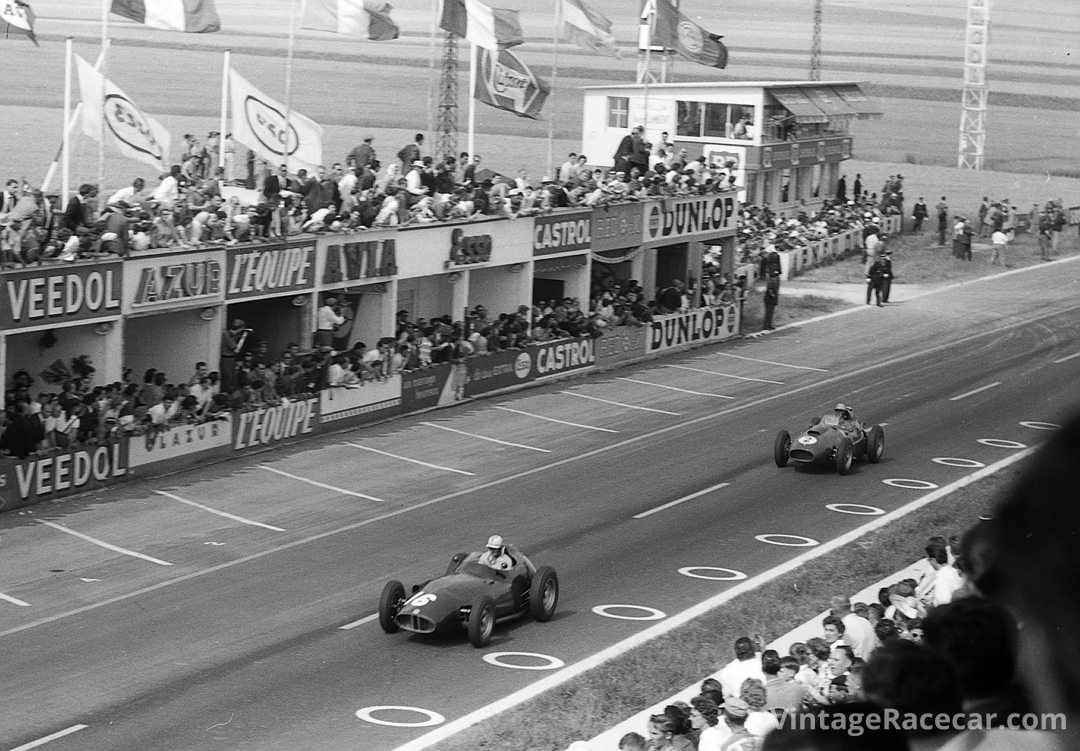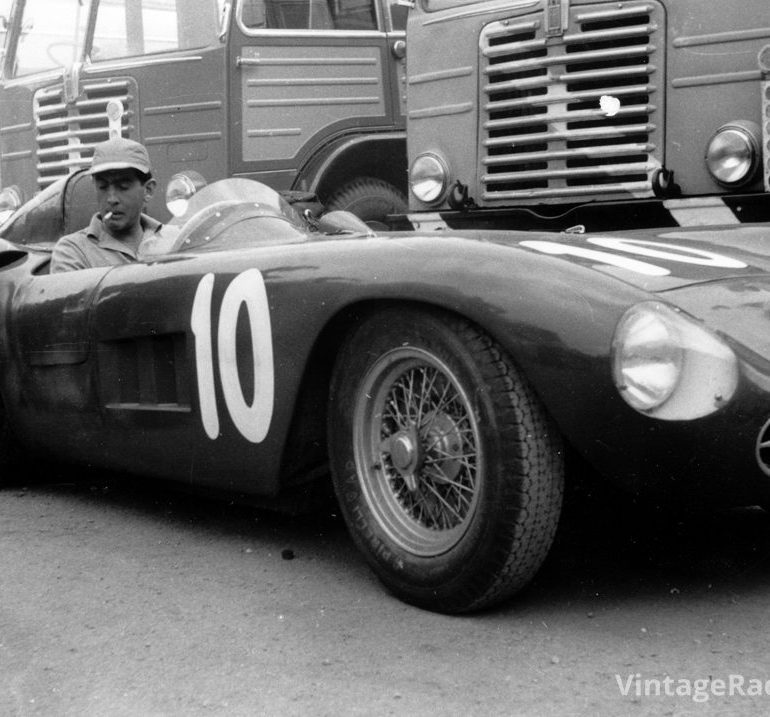
Photo: Maserati Archive
A rather prickly young man from Rome, Luigi Musso had all the qualities of a great champion, but he was killed before he could become one. Enzo Ferrari himself likened this Italian diplomat’s son to two of the sport’s greats, Felice Nazzaro and Achille Varzi.
In fact, Musso was a sports all-rounder, an especially gifted horseman, fencer and a crack shot. He tried his hand at motor racing in a Patriarca Giannini 750, which he crashed into a statue of the great Italian hero Giuseppe Garibaldi, at Trapani, during the 1950 Giro di Sicilia and retired. He persevered, however, and was saved from the unhappy life of a soft under-bellied gentleman driver at the rather advanced age of 29, when he ran a semi-works Maserati A6SSG, in which he came a creditable 7th in the 1953 Grand Prix of Italy. He graduated to a Maserati 250F in 1954, when he came 2nd in the Grand Prix of Spain, followed in 1955 by 3rd in Holland and 5th in the UK, which was good enough to earn him an invitation from Enzo Ferrari to join Juan Manuel Fangio, Peter Collins and Eugenio Castellotti at Maranello.

Photo: Maserati Archive
Luigi competed in a Lancia-Ferrari D50 in 1956 and won first time out in a shared drive with Fangio in the Grand Prix of Argentina on January 22. The Italian fractured an arm, however, when he crashed out of the 1000 Kilometers of the Nürburgring in late May and did not race again until the Grand Prix of Germany in August, where there were fireworks. Luigi was forced to hand over his D50 to Eugenio Castellotti, whose Lancia-Ferrari had broken down. Never an easy man to work with, losing his car like that didn’t sit too well with Musso. So when he was told to hand his car to Fangio, who needed to finish in the points in the 1956 Grand Prix of Italy to win his fourth Formula One World Championship, he refused. He hadn’t worked his way up to 2nd for nothing, he said, and insisted on continuing the race, which he rejoined and briefly took the lead before a steering arm gave out. That incident, by the way, led to Peter Collins’ incredibly selfless gesture of voluntarily giving his D50 to Fangio, who came 2nd in the Englishman’s car and won the title.
As Fangio left for Maserati, Mike Hawthorn arrived at Maranello to take his place and join his friend Collins, Castellotti and Musso after a varied 1956 driving a Maserati 250F a BRM P25 and a Vanwall VW2 with only four championship points to show for it. Luigi took another January victory in Argentina, in 1957, when he won the 1000 Kilometers of Buenos Aires with Eugenio and Masten Gregory in a Ferrari 290 MM. He also came 2nd in the British and French Grands Prix and took 4th in Germany, which was enough to boost him to 3rd in the Formula One World Championship.
Musso felt he was homing in on the world title, but the closer he got to it the more risks he took and the more he pushed himself and his car beyond the limit. Even in a minor race at Monza, for instance, he took pole position with a blood curdling display of motorized athletics, which included full opposite-lock slides around the edge of the famous banking and inches of daylight under his Ferrari’s tires.

Victory in the 1958 Grand Prix of Syracuse meant Luigi felt he had the measure of the new Ferrari 246 and with half the season gone, both Musso and Mike Hawthorn were in the running for the World Championship when they turned up at Reims for the Grand Prix of France. And, of course, both were determined to squeeze as many points as they could out of the race.
Their new Ferrari Dino 246s had not held the road as well as they should have at the preceding Grand Prix of Belgium, so the cars’ suspensions were modified during the three weeks before Reims, and that improved their performance no end.
Musso was feeling pretty confident because he had won the non-championship Coupe de Vitesse F1 race at Reims the previous year, having taken Juan Manuel Fangio’s advice. The Argentinean told Luigi that, if he kept his foot flat to the floor going through the Muizon hairpin at the end of the main straight, where everyone else lifted, he could gain at least half a second a lap. So Luigi did, and he was sure that rather hairy technique helped him to victory. The only problem was that “Luigino,” as the Italian was nicknamed, won in a Lancia-Ferrari D50 in 1957, but the ’58 Dino 246 was a more powerful car with completely different handling characteristics. So, keeping his foot hard down in the Dino was likely to produce a whole new set of circumstances, fatal as it turned out.
During practice on July 5, Musso floored the 246’s accelerator but, sure enough, he immediately found he was running a bigger risk than in the D50. Even so, he set the second fastest time of 2 mins 22.4 secs on the 5.187-mile road circuit and ended up sitting next to poleman Hawthorn for the start of the race. Yet it was Harry Schell, the third man on the front row, who got away first in his BRM P25, although Mike took the lead from him at the end of the first straight, with Musso, Collins, Brooks, Fangio and Behra following in that order.
Peter’s air scoop above the magneto flew off and lodged under his brake pedal on lap five, so he shot up the Muizon escape road to safety. Five laps later, while charging into the Muizon hairpin at over 140 mph, Musso’s Ferrari skidded out of control and somersaulted over a ditch. Luigi was thrown out of the car and killed.
Years later, Enzo Ferrari said the truth about Musso’s death would probably never be known and felt the newspaper reports of the day were unreliable as they predominantly reflected the fear of the marshals nearest to the accident rather than what actually happened. But he said he was convinced that Luigino kept his accelerator pressed firmly to the floor in the heat of the moment as he went into the Muizon hairpin for the 10th time.




